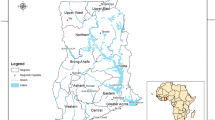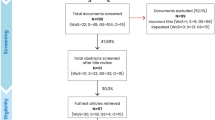Abstract
Based on the analysis method of emergency mechanism, this paper sorts out the key information of the evolution mechanism of the 102 unconventional emergencies occurred in 38 megacities in the world. By using DEMATEL model to search the main factors driving the evolution of the original events to sub-events and the mutual influence among them, the following conclusions are drawn: (1) During the development of unconventional emergencies in megacities, the evolutional phenomenon of events exists generally and the evolution paths are different obviously. (2) It can be seen that there is an obvious interactive feedback relationship between the emergency handling measures and event evolution in megalopolis. (3) The main department of disposal, the level of early warning and the pre-arranged planning are the most powerful factors determining the evolution of events. The research results have obvious warning significance to improving the ability of emergency management. As such, the paper is not a study of a failure in emergency cases, but rather the theoretical framework of unconventional emergencies evolution that make actions and decisions stand out as meaningful for the actors involved in dealing with situations of high complexity and uncertainty. In the future, it is necessary to study the driving results caused by various factors and explore the internal driving mechanism between the driving factors and the type of sub-events.







Similar content being viewed by others
References
Bernosky J (2016) Planning for the unconventional emergency. J Am Water Works Ass 108(8):17–19
Burkle FM (2005) Integrating international responses to complex emergencies, unconventional war, and terrorism. Crit Care Med 33(S1):7–12
Chen WC, Tseng CP (2012) Default risk-based probabilistic decision model for risk management and control. Nat Hazards 63(2):659–671
Chen QX, Zeng J (2005) Problems and countermeasures: management system reform of county governments in Chinese megacities. Chin Publ Admin 12:55–58
Chen A, Chen N, Ni HH et al (2009) Analysis method of modern emergency management mechanism. Science Press, Beijing, pp 45–62
Falatoonitoosi E, Leman Z, Soroosh S, Salimi M (2013) Decision-making trial and evaluation laboratory. Res J Appl Sci Eng Technol 5(13):3476–3480
Fan WC (2007) Thoughts and suggestions on the scientific problems in the emergency management of national public emergency. China Sci Found 2:271–279
Gabus A, Fontela E (1972) World problems an invitation to further thought within the framework of DEMATEL. Battelle Geneva Research Centre, Geneva
Gabus A, Fontela E (1973) Perceptions of the world problematique: communication procedure, communicating with those bearing collective responsibility. Battelle Geneva Research Centre, Geneva
General Administration of Quality Supervision, Inspection and Quarantine of the People’s Republic of China, Standardization Administration of the People’s Republic of China (2017) Emergency Classification and Coding, GB/T35561-2017
Heng X, Chen G (2018) Research on integrated governance innovation of megacities. J Univ J Soc Sci Edit 58(3):126–133
Jin FD (1985) Preliminary study on the speed of industrial development and its economic characteristics in Japan’s megacities after the World War II. Contemp Econ Jpn 5:1–6
Keilis-Borok VI, Soloviev AA (2010) Variations of trends of indicators describing complex systems: change of scaling precursory to extreme events. Chaos 20(3):033104
Lacasana-Navarro M, Aguilar-Garduno C, Romieu I (1999) Evolution of air pollution and impact on control programs in 3 megacities in Latin America. Salud publica de Mex 41(3):203–215
Li X, Sun SQ (2018) From fragmentation to integrity: the road of social governance modernization in China’s megacities. H Soc Sci 1:59–66
Li M, Yang MJ (2006) A summary of the research on the industrial structure of China’s cities. Ind Technol Econ 2:5–8
Li HM, Liu J, Ye X (2015) Scenario-based method for generating decision processes for unconventional emergencies. Syst Eng Theory Method Appl 24(6):795–805
Lu XL, Zhao Y, Wang LW (2017) Study on the influencing factors of rural tourism development based on DEMATEL method. Resour Dev Mark 2:209–214
Madronich S (2006) Chemical evolution of gaseous air pollutants down-wind of tropical megacities: Mexico City case study. Atmos Environ 40(31):6012–6018
Monares A, Ochoa SF, Pino JA, Lopez TR, Noguera M (2014) Using unconventional awareness in emergency responses. IEEE Lat Am Trans 12(S1):62–68
Ren ZY (2014) Views on urban development policy and scale standards. Urban Dev Stud 21(9):1–4
Sun ZJ, Su XS, Liu RH (2017) An empirical study on the changes of Industrial Structure In Megacities: taking Beijing and Shanghai as examples. China Soft Sci 3:84–98
Wang JL, Zhou GH, Peng XY (2018) Risk assessment of overseas railway projects based on DEMATEL and ANP. Res Sci Technol Manag 11(34):219–227
Wu GB, Dang M, Wu JH, Li HY (2015) Research on the impact of goal differences on communication behavior and emergency cooperation under complex tasks. China Soft Sci 5:149–159
Zhang W (2015) Controlling the population size of megacities is a major development issue-also on Beijing’s population control strategy. Expand Horiz 6:53–58
Zhang SL, Nie LQ (2017) Behavior of construction safety management based on DEMATEL method. Saf Environ Eng 24(1):121–125
Zhao HL, Liu JP, Liu XD (2010) Research on the optimal route of emergency resource scheduling for unconventional urban traffic emergencies. J B I Technol (Soc Sci Edit) 12(6):65–68
Zhou D, Chen A (2015) Analysis of emergency mechanism and standardization of public safety: a case study of MERS epidemic in Korea. Stand Sci 10:49–53
Acknowledgements
This research is based on the project “Study on the Evolution Mechanism and Prevention Control of unconventional Emergencies in megacities” supported by Beijing Natural Science Foundation Program.
Author information
Authors and Affiliations
Corresponding authors
Additional information
Publisher's Note
Springer Nature remains neutral with regard to jurisdictional claims in published maps and institutional affiliations.
Electronic supplementary material
Below is the link to the electronic supplementary material.
Rights and permissions
About this article
Cite this article
Zhou, D., Fan, C. & Chen, A. Evolution mechanism and driving factors of unconventional emergencies in megacities: an empirical study based on 102 cases in the world. Nat Hazards 103, 513–530 (2020). https://doi.org/10.1007/s11069-020-03998-7
Received:
Accepted:
Published:
Issue Date:
DOI: https://doi.org/10.1007/s11069-020-03998-7




